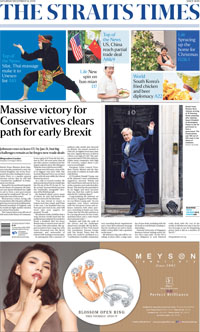
The Straits Times is an English-language daily broadsheet newspaper based in Singapore and currently owned by SPH Media Trust. The Sunday Times is its Sunday edition. The newspaper was established on 15 July 1845 as The Straits Times and Singapore Journal of Commerce. The Straits Times is considered a newspaper of record for Singapore. The print and digital editions of The Straits Times and The Sunday Times have a daily average circulation of 364,134 and 364,849 respectively in 2017, as audited by Audit Bureau of Circulations Singapore. Myanmar and Brunei editions are published, with newsprint circulations of 5,000 and 2,500 respectively.
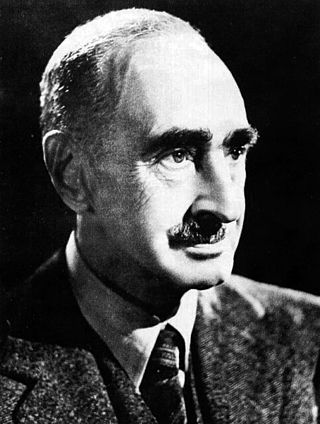
Sir Andrew Caldecott was a British colonial administrator.

The establishment of a British trading post in Singapore in 1819 by Sir Stamford Raffles led to its founding as a British colony in 1824. This event has generally been understood to mark the founding of colonial Singapore, a break from its status as a port in ancient times during the Srivijaya and Majapahit eras, and later, as part of the Sultanate of Malacca and the Johor Sultanate.
Lai Teck was a leader of the Communist Party of Malaya and Malayan People's Anti-Japanese Army. A person of mixed Sino-Vietnamese descent, prior to his arrival in Malaya, Lai Teck was believed to have led his life as Truong Phuoc Dat until 1934, during which Dat disappeared and Lai Teck appeared.
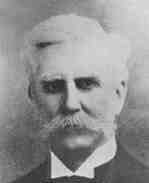
Sir Cecil Clementi Smith, was a British colonial administrator.
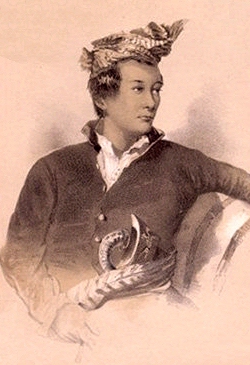
Sultan Sultan Ali Iskandar Shah I ibni almarhum Sultan Ahmad Hussein Muazzam Shah I was the 19th Sultan of Johor, who succeeded his father, Sultan Hussein after the latter died of natural cause in 1835. Over the next twenty years, Sultan Ali's claims to the office of Sultan of Johor were only recognised by some merchants and a few Malays. Like his father, Sultan Ali's was much of a puppet monarch and played a minimal role in the administrative affairs of the state, which came under the charge of the Temenggong and the British. In 1855, Sultan Ali ceded the sovereignty rights of Johor to Temenggong Daeng Ibrahim, in exchange for a formal recognition as the "Sultan of Johor" by the British and a monthly allowance. Following the secession of Johor, Sultan Ali was granted administrative charge over Muar until his death in 1877, and in most administrative matters, was often styled as the "Sultan of Muar".

Kapitan China Chung Keng Quee was the founder and administrator of modern Taiping in Perak, Malaysia. Appointed "Capitan China" by the British in 1877, he was a millionaire philanthropist and known as an innovator in the mining of tin. He was involved in many other industries including farming, pawnbroking and logging. He was respected by both Chinese and European communities in the early colonial settlement. His survival in the chaotic era owes much to his standing as leader of the Hai San, a Chinese secret society in British Malaya during the time of the Larut Wars (1862–73). a position he is said to have held till early 1884 although in all probability he continued to remain a leading member. The old fort at Teluk Batu was built by him to safeguard the mine that he opened there. He was a member of the Commission for the Pacification of Larut and sat as one of six members of the Advisory Perak State Council appointed by the British. Commenting on the role of the Perak Council, Richard James Wilkinson wrote,
"It is for the reader, in the light of subsequent events, to judge how far the Councillors were right or wrong, and to see for himself who really did the pioneer work of building up the prosperity of Perak. In the published accounts of British rule in Malaya, sufficient prominence has not always been given to the efforts of these early pioneers; the reaper, intent on his own work, is apt to forget the man who sowed. These Council Minutes are the record of the work of the sowers. A study of that record will show how much the State owes to Sir Hugh Low and to his fellow-Councillors, especially Raja Dris, Sir William Maxwell, and the Chinese towkays, Ah Kwi [Chung Keng Quee] and Ah Yam."

Singapore, officially the State of Singapore, was one of the 14 states of Malaysia from 1963 to 1965. Malaysia was formed on 16 September 1963 by the merger of the Federation of Malaya with the former British colonies of North Borneo, Sarawak and Singapore. This marked the end of the 144-year British rule in Singapore which began with the founding of modern Singapore by Sir Stamford Raffles in 1819. At the time of merger, it was the smallest state in the country by land area, and was the country's largest city behind the capital, Kuala Lumpur.

Seow Poh Leng one of the first few Peranakan Babas at Emerald Hill, was a prominent and successful Singaporean banker, founding member of the Ho Hong Bank, member of the committee of the Straits Settlement, philanthropist and benefactor of public development works. He was a strong advocate of limited liability trading and promoted the advantages of the Limited Liability Company system.

The Larut Wars were a series of four wars started in July 1861 and ended with the signing of the Pangkor Treaty of 1874. The conflict was fought among local Chinese secret societies over the control of mining areas in Perak which later involved rivalry between Raja Abdullah and Ngah Ibrahim, making it a war of succession.
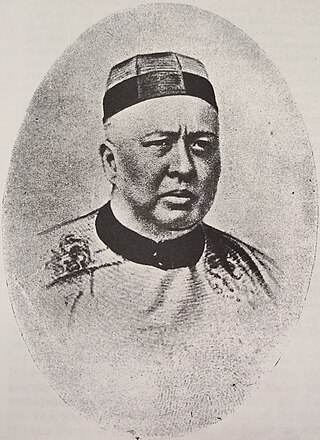
Tan Kim Ching, also known as Tan Kim Cheng, was a Chinese politician and businessman. He was the eldest of the three sons of Tan Tock Seng, the founder and financier of Tan Tock Seng Hospital. He was consul for Japan, Thailand and Russia, and was a member of the Royal Court of Siam. He was one of Singapore's leading Chinese merchants and was one of its richest men in Singapore at that time. He was also the first Asian member of the Straits Branch of the Royal Asiatic Society. After his father's death, he became the Kapitan Cina of the Straits Chinese community. He is believed to have been the head of the Triad in Malaya.
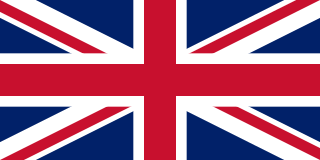
The British Military Administration (BMA) was the interim administrator of British Malaya from August 1945, the end of World War II, to the establishment of the Malayan Union in April 1946. The BMA was under the direct command of the Supreme Allied Commander South East Asia, Lord Louis Mountbatten. The administration had the dual function of maintaining basic subsistence during the period of reoccupation, and also of imposing the state structure upon which post-war imperial power would rest.
The Malaya cricket team was a team that represented the combined territories of the Federated Malay States and the Straits Settlements in various international cricket matches between 1906 and 1961.
Choa Chong Long was a Chinese prominent magnate, revenue farmer and pioneering colonist who served as the first Kapitan Cina of Singapore under the British colonial government.

Arthur Benison Hubback was an English architect and soldier who designed several important buildings in British Malaya, in both Indo-Saracenic architecture and European "Wrenaissance" styles. Major works credited to him include Kuala Lumpur railway station, Ubudiah Mosque, Jamek Mosque, National Textile Museum, Panggung Bandaraya DBKL, Ipoh railway station, and Kowloon railway station.
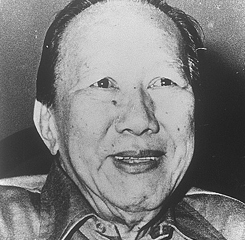
Choo Seng Quee Joseph, popularly known as Uncle Choo, was a Singaporean footballer and football coach. He was coach of the Indonesia, Malaya/Malaysia and Singapore national teams. He is widely recognised as one of Singapore's best football coaches.
Leonard Francis Comber is a British military and police officer, and later book publisher, operating in British India, Malaya, Singapore, Hong Kong and Australia. He was also an editor and author of books relating to South-East Asia.
Lim Beng Hong OBE, who preferred to be, and was most often, referred to as Mrs. B. H. Oon, was the first woman to be called to the Malayan Bar 1927. She was also the first ethically Chinese woman to hold a degree from University College London, the first Malayan woman to be called to the English Bar (1926), and the first woman representative on the Federation of Malaya Legislative Council (1948). According to press reports at the time, Lim Beng Hong and her brother Lim Khye Seng made English legal history when, in 1926, they became the first brother and sister to be called to the bar on the same night. History was made again when they were both called to the bar in Penang, on the same day.
Emily or Emma Sadka was an Iraqi-Singaporean historian and researcher specialising in the Political History of the Malayan region, which she taught at the University of Malaya (Singapore) and in Australian universities.
Helen Heng Siak Neo was a Singaporean badminton player who won numerous titles in the late 1940s to the mid 1950s. She was Singapore's badminton star of the 1950s and was the youngest winner of the Malaysia Open women's singles and doubles titles when she won it at the age of 15. Helen was also the most successful female shuttler in Singapore Open history with 15 titles and the first female player from Singapore to participate in the Uber Cup as part of the Malayan team in 1956.













